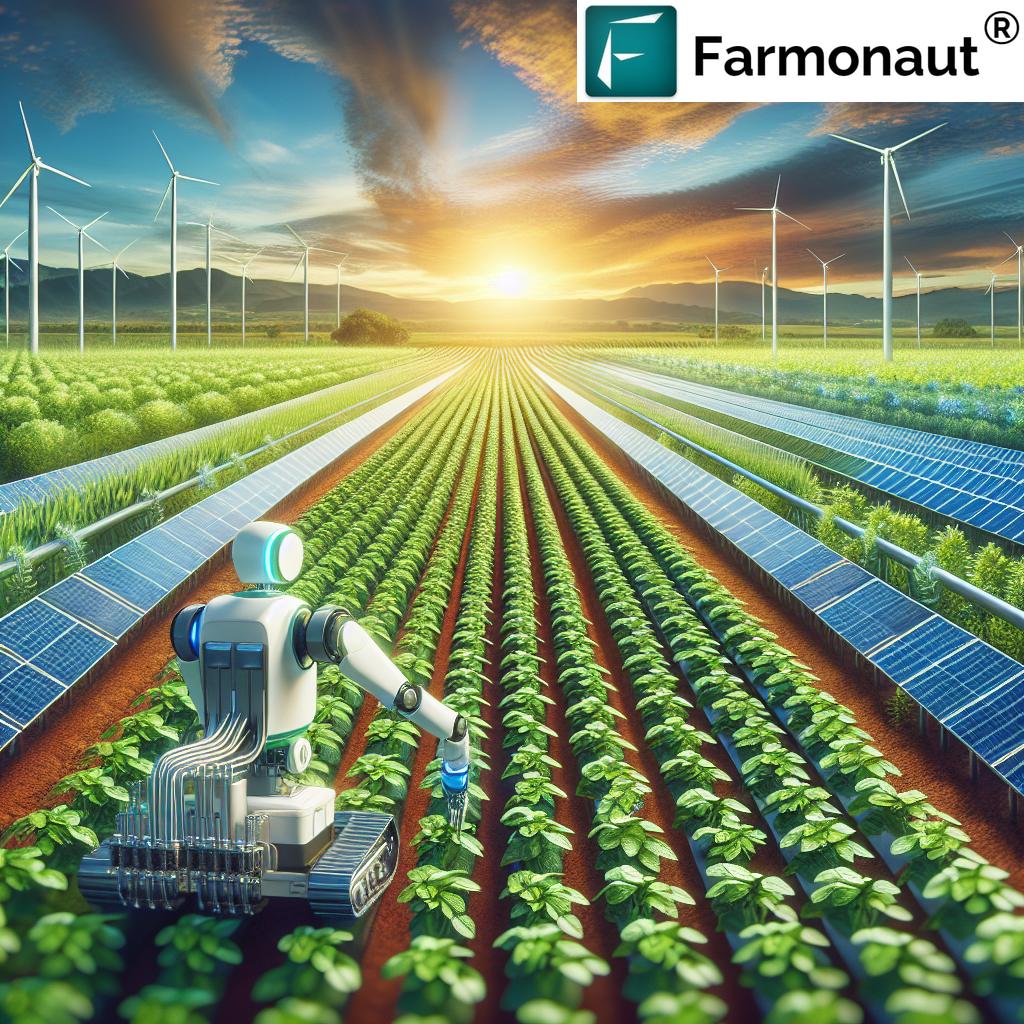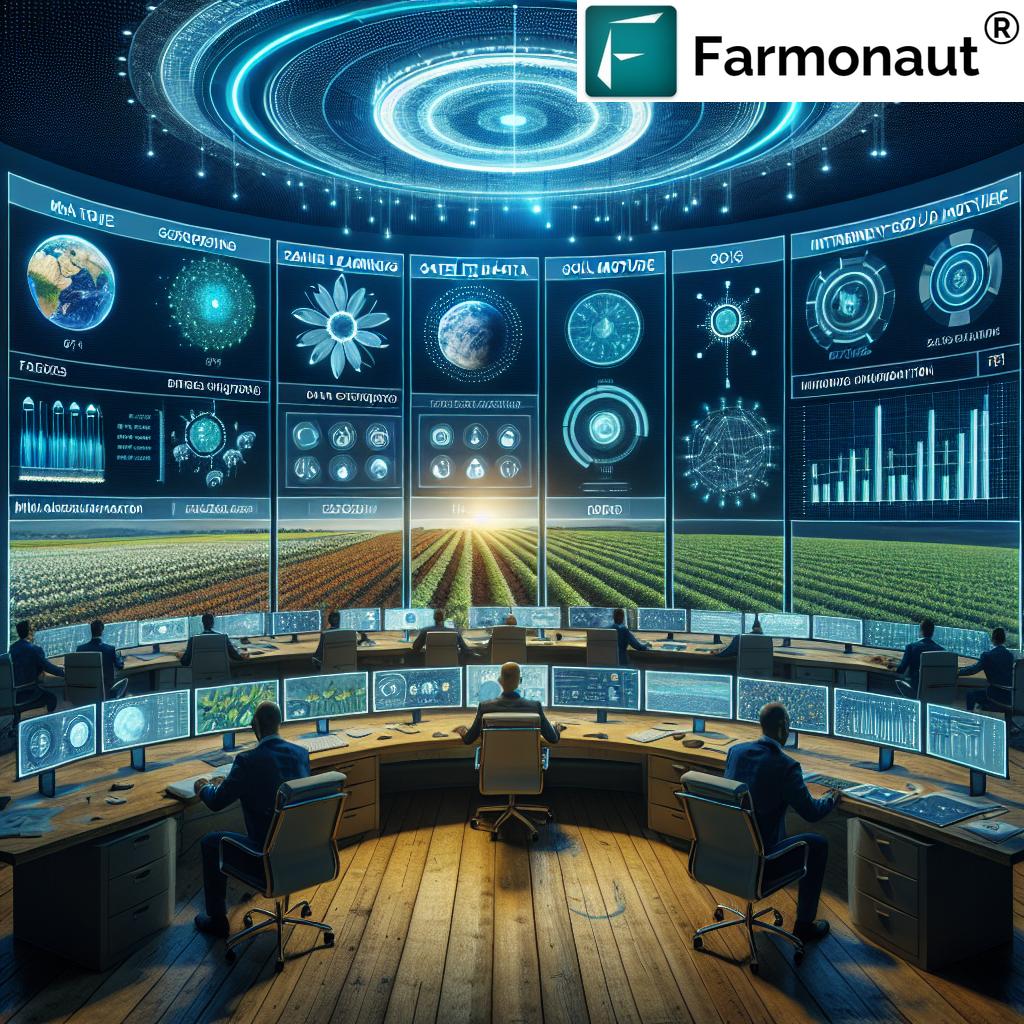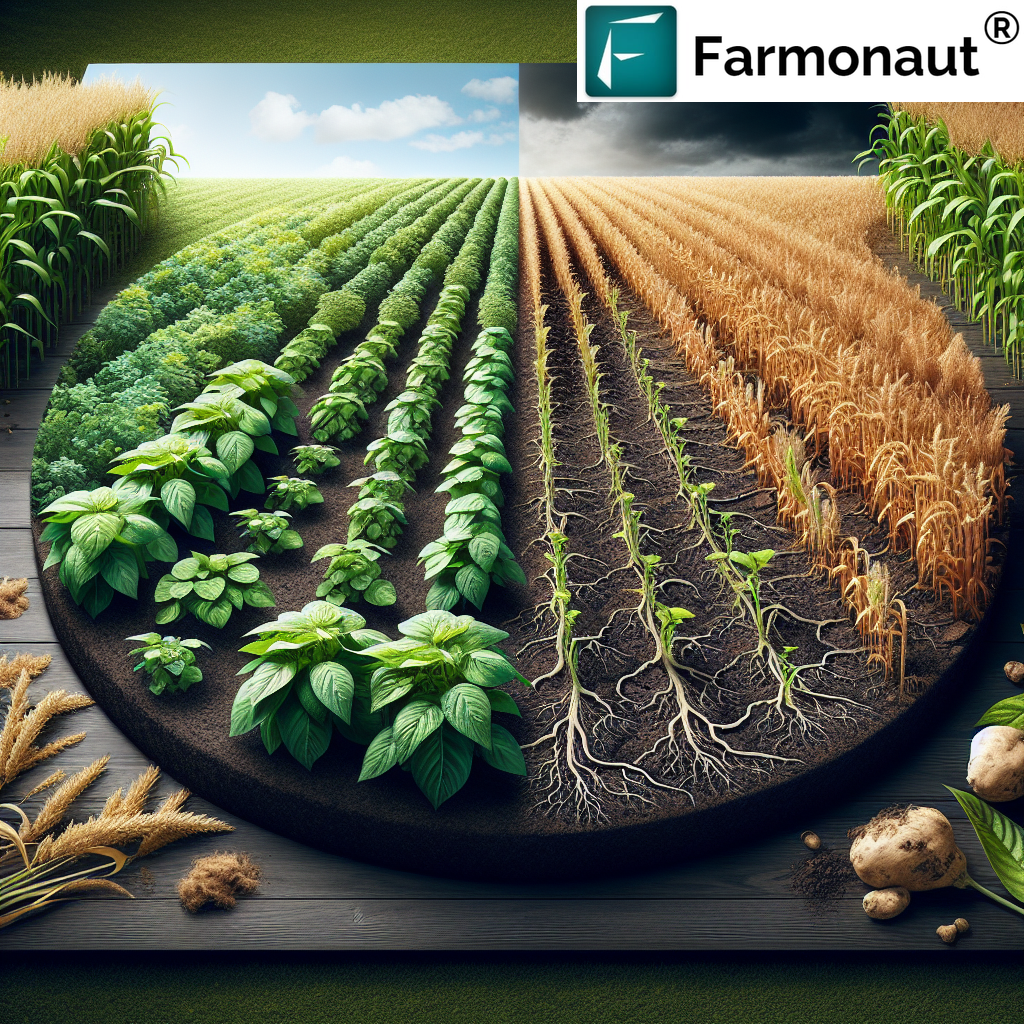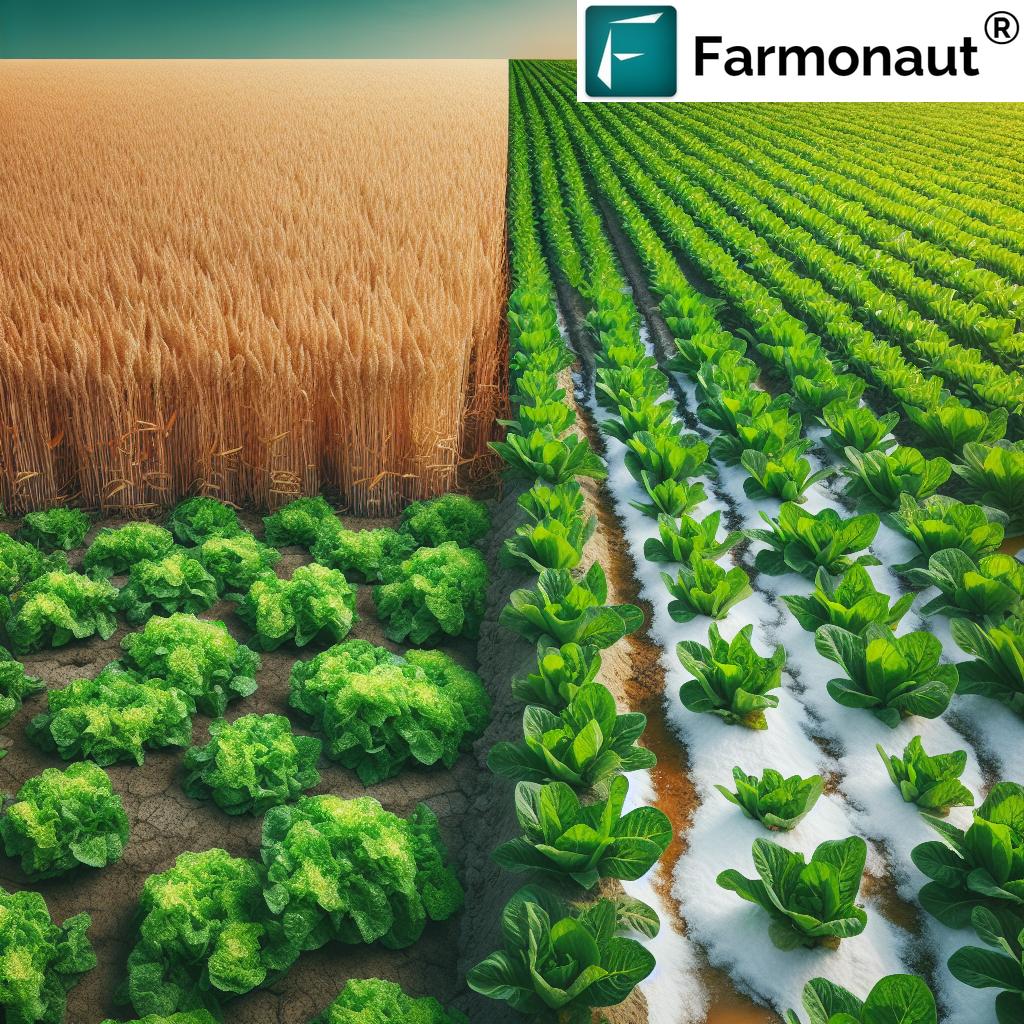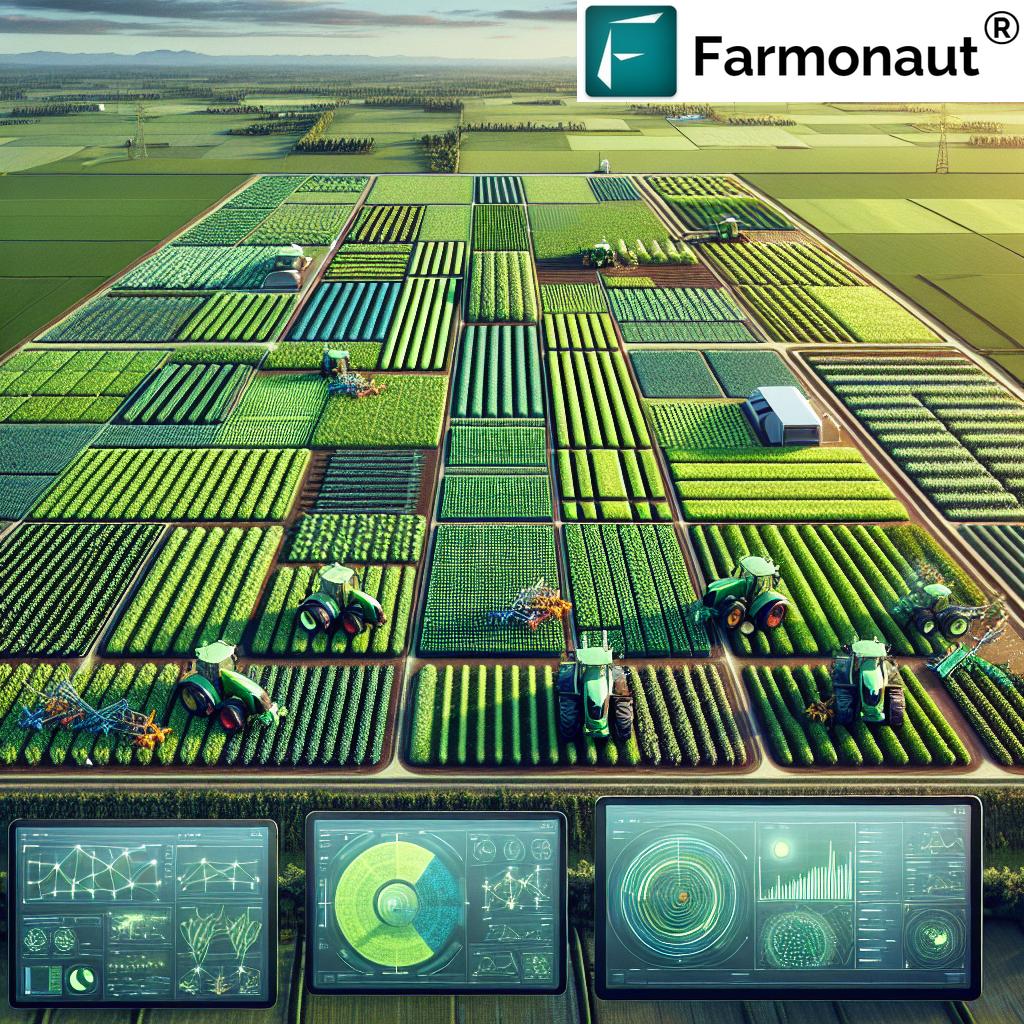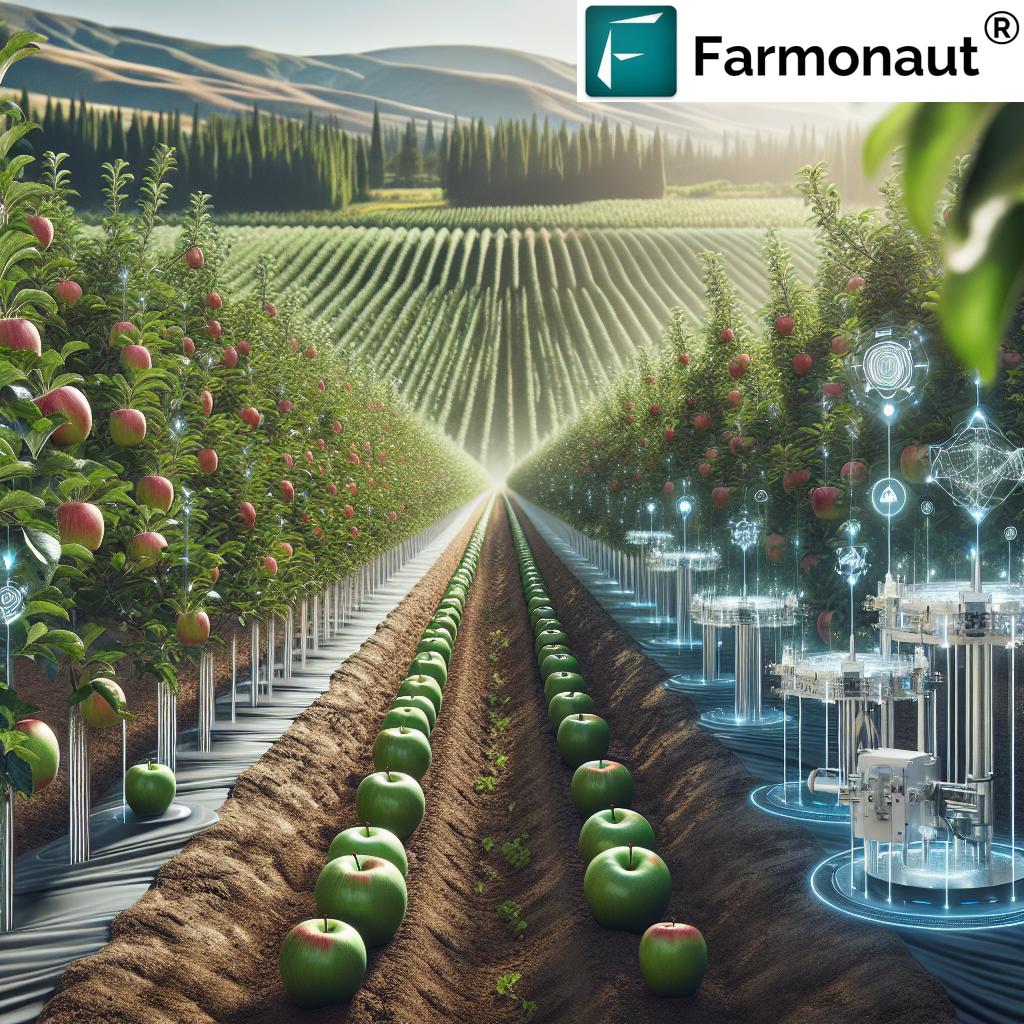Table of Contents
- Introduction: The Age of Smart Crops
- Defining Smart Crops & Precision Farming Solutions
- Smart Crop Secrets: 7 Shocking Technologies Revolutionizing Farming
- Comparison Table of Smart Farming Technologies
- Global Trends: Smart Agriculture Technologies in Action
- Facing the Challenges of Smart Crop Adoption
- The Future: Climate Resilient Farming & Ongoing Innovations
- Farmonaut: Making Precision Agriculture Accessible for All
- FAQs
- Conclusion
“AI-powered sensors can boost crop yields by up to 30% through real-time soil and plant health monitoring.”
Smart Crop Secrets: 7 Shocking Techs Changing Farming
As we confront intensifying climate change, rapid population growth, and increasing resource scarcity, the agricultural sector finds itself amidst a technological revolution. The rise of smart crop technologies is transforming traditional farming into a data-driven, sustainable, and climate-resilient powerhouse.
We’re witnessing the dawn of a new era—smart crops—grown not simply through experience and intuition, but powered by artificial intelligence (AI), the Internet of Things (IoT), robotics, nanotechnology, and satellite data. These breakthrough advancements are enabling precision farming solutions that promise to reduce environmental impact, optimize resources, and secure our future food supply.
Defining Smart Crops & Precision Farming Solutions
What exactly are smart crops? At their core, smart crops are cultivated using precision agriculture practices that leverage real-time data, sensors, and automation to optimize every farming process—from planting through to harvesting. Instead of relying solely on traditional methods, we now use big data to analyze patterns, predict threats, and make optimal decisions.
- Goal: Maximize yields, increase productivity, reduce costs, and minimize environmental impact
- Tools: AI-driven algorithms, IoT sensor networks, satellite data for agriculture, drones, blockchain, robotics, and more
The integration of these technologies allows us to measure detailed metrics like soil moisture, crop health, pest threats, and weather predictions on a hyperlocal scale. The result? Informed, efficient, and sustainable crop production.
“Precision farming using big data analytics reduces fertilizer use by 20%, optimizing resources and minimizing environmental impact.”
Smart Crop Secrets: 7 Shocking Technologies Revolutionizing Farming
Let’s delve into the seven most innovative smart agriculture technologies that are fueling the global transition towards sustainable crop production and climate resilient farming. We’ll uncover how these data-driven tools are fostering higher yields, lower costs, and improved environmental sustainability.
1. Artificial Intelligence & Machine Learning: The Brain Behind Modern Agriculture
Artificial Intelligence in agriculture is a true game-changer. We can now feed immense datasets—ranging from weather data to soil health indicators—into advanced algorithms and models to extract precise insights. Here’s how AI and machine learning enhance productivity and efficiency:
- Analyze complex patterns in soil, crop, and weather data
- Forecast pest infestations and predict disease outbreaks, allowing proactive measures
- Recommend optimal times for planting and harvesting
- Support resource allocation and crop yield optimization to reduce waste
AI-powered tools allow us to make smart, evidence-based decisions quickly—boosting both sustainability and profitability.
2. IoT in Smart Farming: The Power of Real-Time Sensing
Internet of Things (IoT) in smart farming involves a sprawling network of sensors, devices, and connected systems. These sensor networks capture granular data on soil moisture, temperature, humidity, weather conditions, and even plant health in real time.
- IoT weather stations and soil sensors enable precision irrigation—every drop reaches the roots that need it most.
- Drones are used to monitor large farmland quickly, identify stressed areas, and even apply targeted treatments.
- Farmers receive information instantly via mobile apps, empowering timely decisions and conserving valuable resources.
The result? Efficient land management, reduced input use, and higher yields—even in the face of unpredictable climate and weather changes.
3. Robotics and Automation: Precision at Scale
The future of agricultural automation and robotics is here. Smart robots employing AI and computer vision now tackle repetitive, labor-intensive tasks with unmatched precision:
- Autonomous planting, weeding, and harvesting—reducing the need for manual labor
- Robotic weeders identify and remove weeds without damaging crops, slashing herbicide use
- Automated sorting/packing systems further reduce costs and streamline productivity
By marrying robotics with data-driven algorithms, we can increase operational efficiency while lessening the environmental impact of farming practices.
4. Nanotechnology: Revolutionizing Agricultural Inputs
Next-level farming benefits from nanotechnology in agriculture, offering hyper-precise monitoring and delivery systems:
- Nanosensors embedded in the soil detect early signs of disease, nutrient deficiency, or changes in pH
- Nanomaterials improve fertilizer and pesticide efficacy—reducing the amounts needed and minimizing runoff
- Early detection enables quick interventions, preventing crop loss and safeguarding yields
Such advanced solutions help us reduce resource usage while enhancing productivity and contributing to sustainability.
5. Satellite Data for Agriculture: Eyes in the Sky
Satellite technology allows us to monitor vast tracts of farmland—from local fields in India, all the way to massive production belts in China and beyond—with a single glance.
- High-resolution satellite imagery tracks vegetation health, soil moisture, and more across entire regions
- AI-based advisory systems analyze this data to deliver actionable insights
- Gives farmers a near real-time view of their crops and resource needs, wherever they are located
This marriage of AI and satellite data fuels smarter, faster responses and helps drive sustainable and resilient agricultural practices across the globe.
6. Blockchain in Agricultural Traceability: Building Trust and Security
Transparency is more than a buzzword in today’s food system. Blockchain-based traceability records every step of a crop’s journey—from planting to harvest, processing to shelf—providing security and authenticity throughout the supply chain.
- Reduces fraud and safeguards both producers and consumers
- Traceability solutions help meet growing regulatory and buyer requirements for sustainable crop production
- Increases consumer trust in food origin and safety
Explore traceability for your business or farming operation:
Learn more about Farmonaut’s blockchain-based crop traceability solution.
7. Agrivoltaics Solar Farming: Dual-Purpose Land Use
Agrivoltaics solar farming is the practice of co-locating solar panels with agricultural crops. This innovative approach brings dual benefits:
- Solar panels generate energy while simultaneously shading crops, which can reduce heat stress and water evaporation
- Efficient land use in areas with competing needs for agriculture and renewable energy production
- Research shows improved climate resilience and potential for better yields in some crops grown under solar panels
Agrivoltaics exemplifies the synergy between high-tech solutions and sustainable, climate-smart agriculture—addressing food and energy needs together.
Comparison Table of Smart Farming Technologies
| Technology Name | Core Function | Estimated Yield Improvement (%) | Cost Reduction (%) | Climate Resilience Impact | Adoption Level |
|---|---|---|---|---|---|
| AI-Based Crop Monitoring | Analyze data, predict pest outbreaks, optimize inputs | 20-30% | 18-25% | High | Emerging |
| IoT Sensors & Networks | Monitor soil, weather, moisture in real-time | 15-25% | 15-20% | High | Mainstream |
| Satellite Data Analytics | Large-scale monitoring, resource allocation | 15-22% | 12-18% | Medium | Emerging |
| Drones | Aerial monitoring, precision spraying | 12-20% | 10-15% | Medium | Emerging |
| Blockchain Traceability | Food safety, transparency, fraud reduction | 5-10% | Varies | Low | Emerging |
| Robotics | Automated weeding, planting, harvesting | 18-25% | 20-30% | Medium | Emerging |
| Precision Irrigation | Targeted water application, moisture management | 15-22% | 18-25% | High | Mainstream |
Global Trends: Smart Agriculture Technologies in Action
The adoption of smart crop technologies is gathering pace across continents, from China and India to the U.S. and Europe. What’s driving this shift? A combination of escalating food demand, climate risks, and the need for sustainability. Let’s explore notable global initiatives shaping the future of farming.
China: National Action for Digital-Driven Agriculture
China is rolling out a major upgrade to its agricultural system through a five-year smart farming plan. The aim is to digitize agriculture by integrating big data, GPS, advanced AI models, and IoT platforms into every layer of crop production. The result? Increased yields, reduced costs, and a resilient food system.
India: Empowering Farmers with Satellite Data
In India, small and medium farmers are experiencing the transformative power of **satellite data for agriculture**. By using data to inform sowing times, irrigation schedules, and resource planning, farmers can increase both output and income.
Farmonaut, for instance, makes it easy for farmers and agribusinesses to access real-time satellite-based crop health monitoring on mobile and web apps. This empowers data-driven decisions, dramatically improving efficiency, crop health, and resilience against unpredictable weather.
Agrivoltaics: Dual-Purpose Land for Energy and Food
Several countries now invest in agrivoltaics solar farming, which maximizes the value of limited land by enabling simultaneous food and renewable energy production. Solar arrays shield crops from heatwaves, reduce water loss, and provide farmers with extra revenue from clean electricity.
Environmental and Resource Management: The Global Imperative
- Carbon Footprinting: Measuring and reducing the carbon footprint of agricultural operations is now simpler. Discover Farmonaut’s carbon footprint monitoring tools for a sustainable, compliant farm business.
- Fleet Management: Optimize fuel, costs, and vehicle usage with modern agricultural fleet management solutions.
- Large-Scale Management: Handle operations on plantations or forests with scalable, satellite-based large scale farm management systems.
Facing the Challenges of Smart Crop Adoption
Let’s face it—despite all the promise, the journey to climate resilient farming and universal adoption of smart agriculture technologies is not without hurdles.
- High Initial Investment: Cutting-edge systems like sensors, drones, and smart AI platforms require capital. For many smallholders, affordable access—such as Farmonaut’s satellite solutions—is critical for equitable technological adoption.
- Data Privacy & Security: As more farm data is transmitted and analyzed, keeping it private and secure is vital.
- Skills & Training: Learning to operate data-driven systems and interpret information calls for upskilling. Training and easy-to-use interfaces make all the difference.
- Environmental Impact of E-Waste: While IoT devices and sensors reduce fertilizer and chemical use, responsible disposal and recycling of electronic waste are crucial for true sustainability.
The good news? Affordable, real-time, and scalable solutions—like those from Farmonaut—are addressing many of these challenges, ushering in a future where smart farming is accessible to everyone.
The Future: Climate Resilient Farming & Ongoing Innovations
What lies ahead for smart crops and advanced agricultural technologies? Here’s an exciting glimpse:
- Truly Automated Greenhouses: AI-powered “closed loop” systems adjust light, water, nutrients, and pest control for maximum yield, automatically.
- Smarter Data Integration: Mobile, web, and API-based platforms—like those offered by Farmonaut—enable seamless data flow and actionable insights.
- Personalized Advisory: Emerging AI advisory systems tailor crop recommendations to local conditions—customized by field, region, and even farmer experience.
- API Access for Developers: Unlock agricultural innovation by integrating rich satellite and weather data directly into your own systems; visit Farmonaut’s API and developer docs.
This future holds immense promise for crop yield optimization, reduced costs, and sustainable crop production—all vital in the face of growing global food demand and climate challenges.
Farmonaut: Making Precision Agriculture Accessible for All
Farmonaut is at the forefront of democratizing precision agriculture—making advanced smart crop technologies available and affordable to farmers, agribusinesses, and agri-research organizations worldwide.
- Satellite-Based Crop Health Monitoring: Real-time NDVI, soil moisture tracking, and vegetation health analytics available via app or API.
- AI Advisory System (Jeevn AI): Delivers hyper-local, personalized recommendations on crop practices, weather, inputs, resource allocation, and pest risks.
- Blockchain Traceability: Ensures secure, transparent records of crop journeys. Discover how traceability can strengthen your supply chain.
- Fleet & Resource Management: Maximize operational efficiency with dedicated monitoring tools—reduce downtime and keep operations climate-smart.
- Carbon Footprint Tracking: Reduce the environmental impact of your farm with Farmonaut’s carbon footprint assessment platform.
- Affordable, Scalable, and Accessible: Farmonaut’s subscription model lets farms large and small access cutting-edge crop monitoring and resource management without the need for expensive hardware.
Get expert insights, transparency, and cost-effective sustainability for your farm today.
FAQs
What are the most important smart crop technologies transforming farming?
Key innovations include AI-powered advisory systems, IoT sensor networks, satellite data analytics, robotics, blockchain traceability, nanotechnology sensors, and agrivoltaics solar farming. Each brings unique benefits, from real-time insights and cost savings to sustainable, climate-resilient production.
How does satellite data for agriculture help farmers?
Satellite data enables farmers to monitor crop health, moisture levels, and field conditions instantly—across large or hard-to-reach areas. This data supports timely interventions, yield optimization, and informed input use, all without relying solely on expensive equipment.
Is the adoption of smart technologies feasible for small farmers?
Absolutely. While some technologies have high initial costs, platforms like Farmonaut offer affordable, subscription-based precision farming solutions that bring advanced crop monitoring and data analytics to farms of any size.
What is the role of AI in boosting crop yields?
Artificial intelligence in agriculture crunches huge data volumes to predict pest risks, detect diseases, and recommend the right actions at the right time—often increasing yields by 20–30% while reducing input waste.
How can I implement traceability and secure data management on my farm?
By adopting solutions like Farmonaut’s blockchain-based traceability, you ensure secure, tamper-proof records of your crop journey, protecting against fraud and meeting growing demand for supply chain transparency.
Where can developers access smart agriculture data APIs?
Developers can access satellite and weather data APIs directly from Farmonaut. For integration, see the developer documentation.
What benefits do subscription-based smart farming solutions offer?
Subscriptions enable scalable, affordable access to real-time crop health monitoring, AI advisories, and sustainable farm management—without the need for large upfront investments.
Conclusion
The future of food hinges on embracing smart crop technologies—driven by AI, IoT, satellite data, and fully integrated, data-informed management. By integrating these advanced systems, we can meet the world’s food production challenges, unlock new levels of productivity, secure environmental sustainability, and build a resilient, efficient global agriculture sector.
Let’s work together for a smarter, healthier planet. From field to fork, smart agriculture technologies are our best ally for confronting climate change, growing populations, and the ever-increasing demand for safe, nutritious food. Join the smart crop revolution—your farm, your community, and the environment will thank you.

